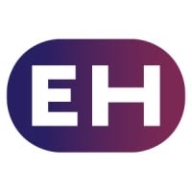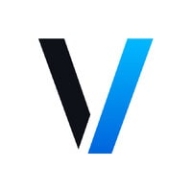

Veracode and ExtraHop Reveal(x) 360 compete in the cybersecurity category. ExtraHop holds an edge due to its advanced real-time threat detection capabilities.
Features: Veracode users value its strong code scanning, integrations with development tools, and application security platform. ExtraHop users appreciate its real-time threat detection, network visibility, and extensive response capabilities.
Room for Improvement: Veracode requires improvements in scanning speed, reporting functionality, and specific performance areas. ExtraHop needs better integration with security tools, simplified alert management, and scalability.
Ease of Deployment and Customer Service: Veracode is recognized for its straightforward deployment and responsive support. ExtraHop has a steeper learning curve and mixed feedback on customer service response times.
Pricing and ROI: Veracode's pricing is competitive with clear ROI through improved code security. ExtraHop has higher costs but offers substantial ROI due to enhanced network protection.
| Product | Market Share (%) |
|---|---|
| Veracode | 3.4% |
| ExtraHop Reveal(x) 360 | 0.3% |
| Other | 96.3% |


| Company Size | Count |
|---|---|
| Small Business | 69 |
| Midsize Enterprise | 43 |
| Large Enterprise | 112 |
Cloud is where your business operates, where it innovates, how it enables employees, and how it connects with customers. Adversaries know this, and that's why attacks against cloud assets in IaaS, PaaS, and SaaS environments are increasing. With Reveal(x) 360, you can mitigate the blast radius of advanced threats like ransomware and supply chain attacks with unified security across multicloud and hybrid environments in a single management pane.
Veracode is a leading provider of application security solutions, offering tools to identify, mitigate, and prevent vulnerabilities across the software development lifecycle. Its cloud-based platform integrates security into DevOps workflows, helping organizations ensure that their code remains secure and compliant with industry standards.
Veracode supports multiple application security testing types, including static analysis (SAST), dynamic analysis (DAST), software composition analysis (SCA), and manual penetration testing. These tools are designed to help developers detect vulnerabilities early in development while maintaining speed in deployment. Veracode also emphasizes scalability, offering features for enterprises that manage a large number of applications across different teams. Its robust reporting and analytics capabilities allow organizations to continuously monitor their security posture and track progress toward remediation.
What are the key features of Veracode?
What benefits should users consider in Veracode reviews?
Veracode is widely adopted in industries like finance, healthcare, and government, where compliance and security are critical. It helps these organizations maintain strict security standards while enabling rapid development through its integration with Agile and DevOps methodologies.
Veracode helps businesses secure their applications efficiently, ensuring they can deliver safe and compliant software at scale.
We monitor all Container Security reviews to prevent fraudulent reviews and keep review quality high. We do not post reviews by company employees or direct competitors. We validate each review for authenticity via cross-reference with LinkedIn, and personal follow-up with the reviewer when necessary.